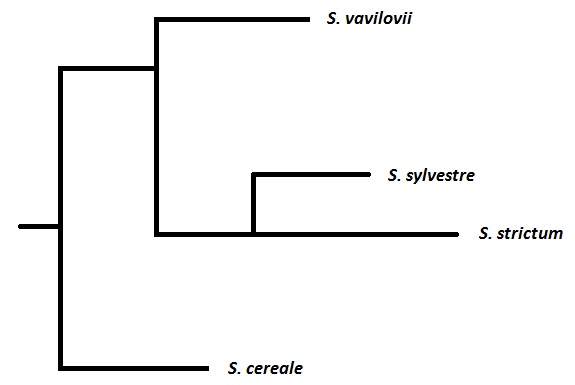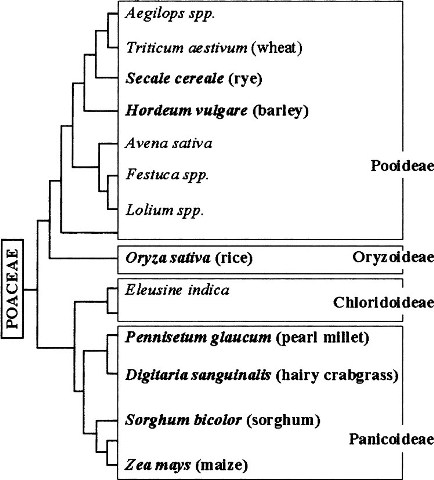Classification
Rye Grain or Secale cereale falls under the family Poaceae, which is a family of grasses. The name Secale cereale is Latin and when translated, literally means Rye Ceres. In ancient Roman times, Ceres was the god of fertility and the harvest. And the word Secale is the Latin equivalent for rye. The English word rye first came in to use before the year 900 and was pronounced Ryge. The word is thought to have first been of Balto-Slavc origin, coming from the word ruzi, meaning whiskey. There are many types of grasses that are closely related to Secale cereale. Many of these other grasses are seed grains and have also been cultivated by humans for thousands of years. Some of others include wheat, barley, and corn.
 The taxonomic information contained on the
above table was supplied by the
Integrated Taxonomic Information System
The taxonomic information contained on the
above table was supplied by the
Integrated Taxonomic Information System
The Phylogenetic tree on the left shows the relation between several popular food sources including rye, rice, wheat, barley, pearl millet, sorghum, and corn which fall under the family Poaceae. Several other grasses are also included in this phylogeny including crab grass. This tree was formed using genetic similarity within specimens. Researchers looked at the genome of each of these grasses and had a computer find sequences of two to four nucleotides, or microsatellites, that corresponded between each species. The species then were ranked by number of microsatellites shared.

The phylogenetic tree on the right shows the relation between all members of the Secale genus using the same microsatellite method as outlined above. It shows that rye (S. cereale) shares the least amount of microsatellites with any other member of the Secale genus.
Continue on to Habitat
First tree was from Journal of Experimental Botany Volume 56, Issue 416 Pp. 1605-1614 and I made the second tree with information from Genetics in Molecular Biology, 29, 4, 685-691

